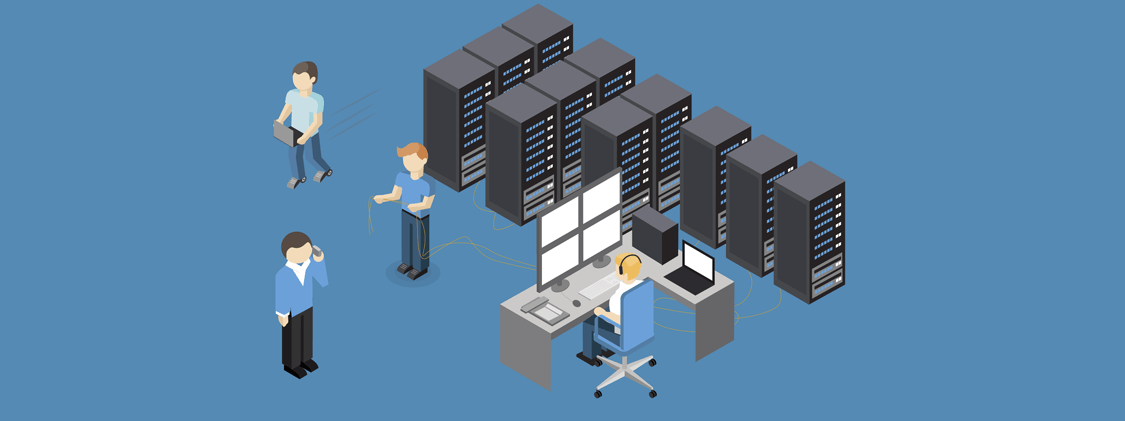Cloud Hosting vs. SaaS vs. On-Premise:
Find Which Solution Is Right for You
If you find web hosting jargon confusing — terms like cloud, SaaS, on-premise — you’re not alone. When planning your IT project implementations, however, you’re well-served to fully comprehend these terms so you can determine which path is right for you. Have no fear, as we’re going to explain each one and outline their advantages and disadvantages. Then you’ll know whether cloud hosting, SaaS or on-premise is the right solution for you and your organization.
Cloud Hosting
Webapper is a cloud hosting company. We build custom infrastructure for our clients using Amazon’s AWS “cloud”. Many of our customers have built custom applications that they make available to others. On occasion, it’s an enterprise application for internal users, but for the most part, it’s for external users. And that illustrates a critical element of cloud hosting — anytime, anywhere access. Cloud hosting is virtual — you don’t own the hardware or operating systems. You can spin up all kinds of configurations and pay for whatever you use. You provide your security layer, such as a password authentication, and anyone with proper credentials can use the cloud application. Cloud hosting is ideal for those willing to rent instead of own. You pay monthly fees to use the provider’s infrastructure. Then you can make changes, such as elastic scaling, whenever you need to.
Advantages: Anytime, anywhere access; no IT capital expenses; flexible configuration; pay-as-you-go; hardware secured
Disadvantages: Requires technical aptitude; complex migrations for existing systems; potentially locked in over time; shared security responsibilities
Software as a Service (SaaS)
SaaS applications are virtually “rented”. If you use Zoom, Slack, Office365, Google Workspace, Dropbox, Salesforce, or Netflix (you have to be using at least one!), you’re using software as a service. You may access the service for free or pay a subscription fee (e.g., $14.99 a month to Netflix). Such services are all hosted in the cloud, giving you anytime, anywhere access to them. You don’t have to manage anything about the infrastructure or application — you simply sign up and use it. It’s easy, but you’re using someone else’s systems, so you don’t get a vote on the way they do things (other than voting with your subscription).
Advantages: Anytime, anywhere access; turnkey solutions; no IT capital expenses; short-term contracts (often)
Disadvantages: Little control over software; potentially locked in over time
On-Premise
If you prefer owning your technology assets, having maximum control, and managing all the technology, on-premise hosting is for you. On-premise (often abbreviated as “on-prem”) means that you use local resources to run software in the building (“on the premises”) of your organization. You purchase the hardware, license the software, and manage everything yourself. In many ways, you’re locking into your IT, which gives you full control but also full responsibility.
Advantages: IT capital investment model; 100% control over infrastructure
Disadvantages: Requires technical expertise; locks in to whatever you deploy (less flexible); all security & reliability responsibilities
Cloud Hosting vs. SaaS vs. On-Premise – Choosing the Right Solution for You
We’re fans of using off-the-shelf software when possible. So if you can find a SaaS application that fits your needs and budget, that’s usually a great decision. We use many SaaS applications ourselves, from communications to sales to operations, because you leverage the power of the network and the marketplace. But we also build custom applications when the market fails to deliver an adequate solution — which we host in the cloud. In many cases, we help other companies migrate from traditional data centers and on-premise environments to the cloud. They seek the flexibility and cost advantages of cloud computing. After a decade of working in the cloud, we rarely recommend on-premise solutions to our clients. If you prefer total control, however, you may be so inclined to use on-premise delivery. Choosing cloud hosting, SaaS, or on-premise service is a major decision. Explore the technical challenges of each with your IT staff and the cost ramifications with your finance team. Then you’ll be able to make a smarter choice for the long term.
And if you’re considering cloud migration, be sure to check out our migration checklist.


Leave A Comment